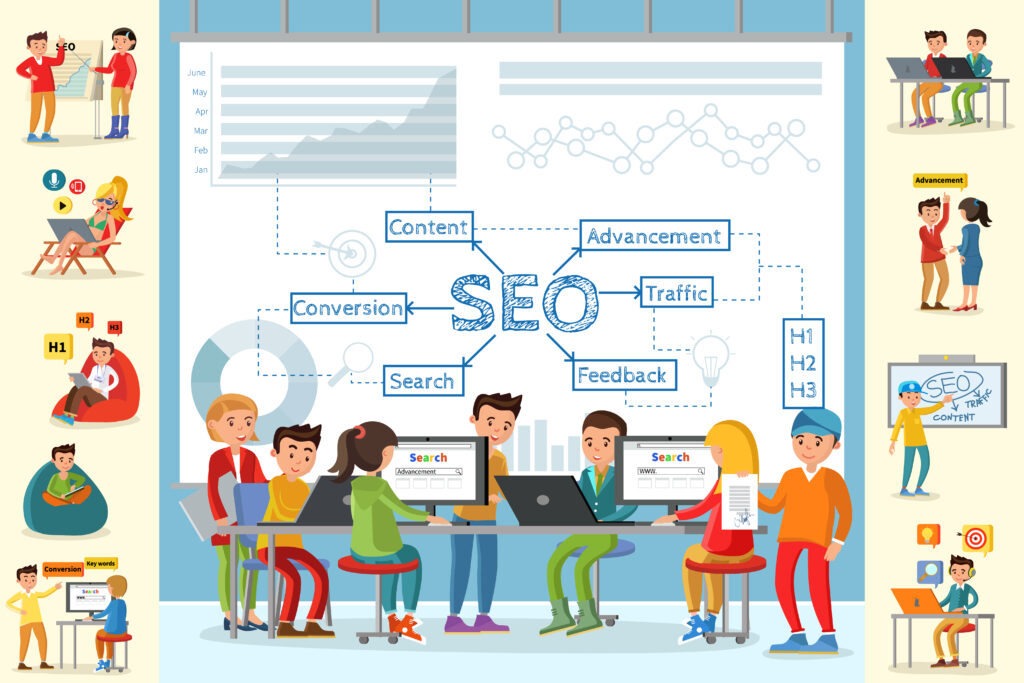In the fast-paced world of digital marketing, simply having a website isn’t enough. To stand out and be discovered online, your website needs to be optimized for search engines. That’s where Search Engine Optimization (SEO) comes in. But SEO isn’t a one-size-fits-all approach—it consists of several different types, each playing a unique role in improving your website’s visibility and performance on search engines like Google.
From on-page SEO that focuses on content and keyword optimization, to off-page SEO that builds your site’s authority through backlinks, and technical SEO that ensures your website runs smoothly—understanding these different types is key to building a successful SEO strategy.
In this blog, we’ll break down the main types of SEO, explain how they work, and show you how to use them together to boost your rankings, drive traffic, and grow your online presence effectively.
Forms of SEO in Digital Marketing
Search Engine Optimization (SEO) — also known as organic optimization, natural search enhancement, or search visibility strategy — is a crucial pillar of digital marketing. It focuses on improving a website’s presence in unpaid (organic) search engine results. Unlike paid advertising, SEO drives sustainable traffic over time by aligning your content with search engine algorithms and user intent.
There are several forms of SEO in digital marketing, each serving different functions but working together to improve your website’s performance and visibility. Below are the most important types you should know:

1. On-Page SEO (On-Site SEO)
On-page SEO, also referred to as content SEO or website SEO, involves optimizing individual pages of your website to rank higher in search engines.
Key elements include:
- Keyword Optimization: Using relevant keywords naturally in your content, meta titles, descriptions, headers, and image alt texts
- Content Quality: Creating valuable, original, and user-intent-driven content.
- Internal Linking: Linking to other relevant pages within your own site.
- URL Structure: Clean and keyword-rich URLs improve crawling and understanding.
On-page SEO helps search engines understand the context and relevance of your content, increasing the chances of ranking higher for specific queries.
2. Off-Page SEO
Off-page SEO, sometimes called external SEO or link-building SEO, focuses on actions taken outside of your website to improve its authority and trustworthiness.
Key strategies include:
- Backlink Building: Earning high-quality links from authoritative websites.
- Social Media Sharing: Promoting content on platforms like Facebook, Instagram, and LinkedIn to increase traffic and link potential.
- Guest Blogging: Writing content for other websites to gain backlinks and exposure.
The main goal of off-page SEO is to build domain authority and increase your site’s reputation in the eyes of search engines like Google and Bing.
3. Technical SEO
Technical SEO refers to optimizing the backend structure and foundation of your website so that search engine bots can crawl, index, and rank it effectively.
Key components include:
- Website Speed: Faster-loading pages improve rankings and user experience.
- Mobile-Friendliness: Ensuring your site is responsive across all devices.
- Secure Sockets Layer (SSL): HTTPS encryption is a ranking factor.
- XML Sitemaps and robots.txt files to guide search engine crawlers
Technical SEO lays the groundwork for all other SEO forms and ensures your website is accessible and user-friendly.
4. Local SEO
Local SEO, also known as geo-targeted SEO or map pack SEO, is essential for businesses that serve specific locations.
Key tactics include:
Google Business Profile Optimization (formerly Google My Business)
Local Citations: Listing your business name, address, and phone number (NAP) on directories.
Localized Keywords: Using terms like “near me” or including city names.
Local SEO helps your business appear in local search results, Google Maps, and “near me” queries — ideal for restaurants, clinics, or service providers.
5. E-commerce SEO
This type of SEO focuses on optimizing online stores and product pages to drive more traffic and sales.
Strategies involve:
- Optimizing product titles and descriptions
- Enhancing site navigation and filters
- Implementing rich snippets like product ratings and prices
E-commerce SEO aims to improve product visibility in search results, reduce cart abandonment, and increase conversions.
6. Voice Search SEO
With the rise of digital assistants like Alexa, Siri, and Google Assistant, voice SEO is becoming more important.
It involves:
- Using conversational keywords and long-tail phrases
- Answering specific questions with structured content
- Optimizing for mobile and page speed.
Voice search SEO enhances your chances of ranking in featured snippets and voice responses.
Understanding the various methods of Search Engine Optimization (SEO) is essential for building a strong and sustainable online presence. Whether it’s on-page SEO for optimizing content and keywords, off-page SEO for building backlinks and reputation, or technical SEO for improving site speed and crawlability — each method plays a unique role in how search engines perceive and rank your website.
Implementing a well-rounded SEO strategy ensures your site not only ranks higher but also delivers a better experience to users. As algorithms continue to evolve, staying updated with modern SEO techniques and combining multiple optimization methods will help you stay ahead of the competition and attract organic traffic consistently.
In short, SEO is not a one-time task, but an ongoing process that drives long-term growth, visibility, and trust in the digital space.
